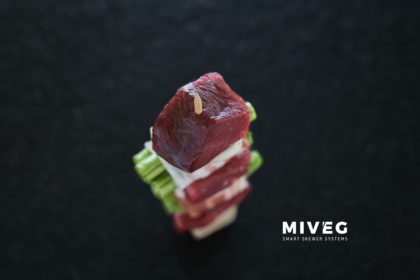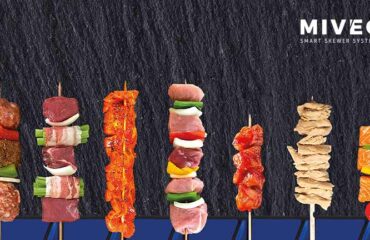The history of the skewer.

The history of the skewers’ discovery and its versatile functions couldn’t be more easy: from the active utilization as a hunting weapon against mammoths, the application for stick bread to a defense tool against wild animals. Our ancestors had to be creative to survive.
To be able to eat the slain prey, it had to be roasted in a heat giving bonfire. The skewer simplified this process, on which simply meat or dough got stuck on to prevent burns on hands and arms.
Although we dropped the war-like purpose of the skewer, the culinary aspect became indispensable. Whether the Asian „Teriyaki-Skewer“, the Caucasian „Shashlik-Skewer“ or the American „Corn on the cob“ is the talking point, food on a skewer is internationally wide-spread and found in almost all cultures.
Not just supermarkets or street food concepts make use of the practical fork-substitute made of wood: Especially in high-class steak houses or french noble restaurants they find great benefit.
Another point that makes the skewers incredibly fit for the future is the ecological aspect. More and more people dedicate themselves for a better tomorrow and a clean world. Wooden skewers offer a good alternative for plastic forks, which are non-recyclable. Wood however is an organic material. It is therefore easily degradable and keeps its value for reuse.
Food on a skewer has a long and globally spread history, it remained true to its lineage. And there’s no end in sight: the traditional skewer doesn’t just score in practical use and variety in material choice, but also convinces in ecological sustainability. It is versatile and multifunctional, has traditional value and a bright future ahead.
 Deutsch
Deutsch  English
English  Français
Français 

